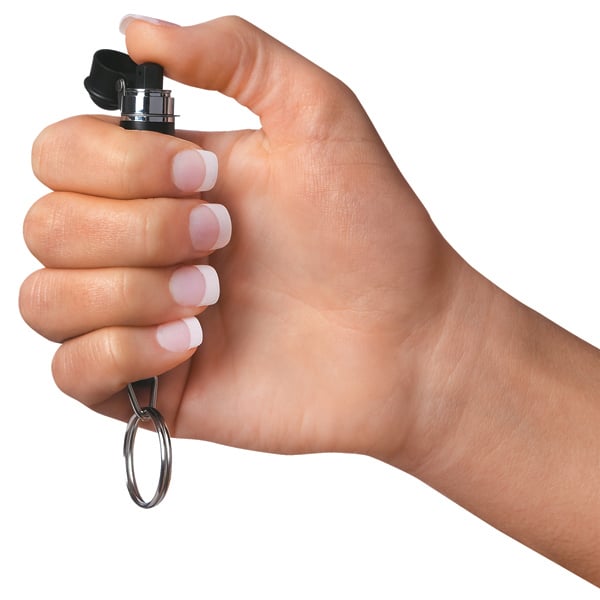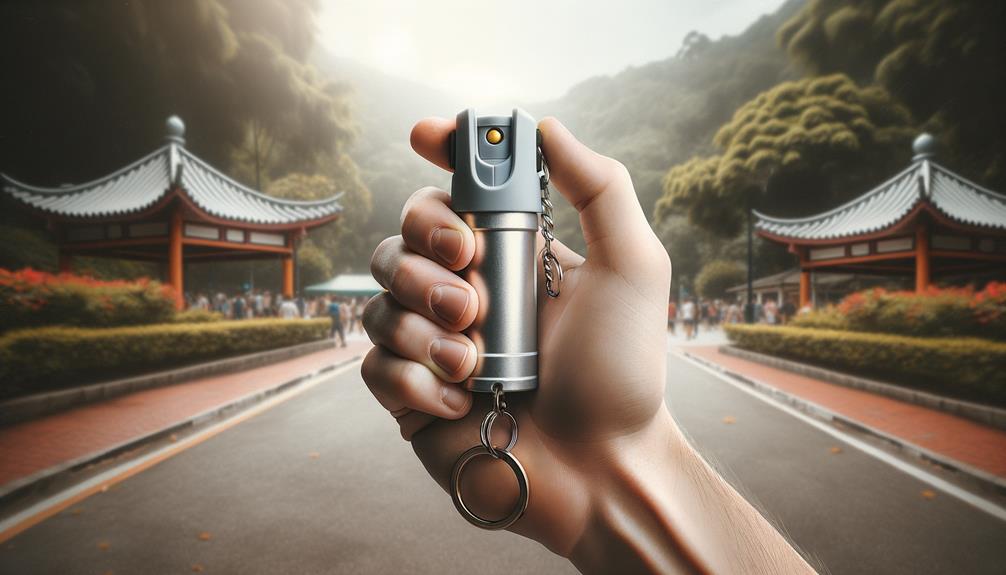
Brainstorm Security Shop

For Orders Over $199

On Any Of Our Products

Details On Refund Page

Pepper spray, also known as oleoresin capsicum spray, OC spray, capsaicin spray, or capsicum spray, is a lachrymator (tear gas) product containing the compound capsaicin as the active ingredient. It is a powerful substance that has been used for personal protection against assailants.
Pepper spray was originally engineered for defense against bears, mountain lions, wolves, and other dangerous predators, and is often referred to colloquially as bear spray. The active ingredient in pepper spray is capsaicin, which is derived from the fruit of plants in the genus Capsicum, including chilis1. Extraction of OC from peppers requires capsicum to be finely ground, from which capsaicin is then extracted using an organic solvent such as ethanol.
The solvent is then evaporated, and the remaining waxlike resin is the oleoresin capsaicin. An emulsifier such as propylene glycol is used to suspend OC in water, and the suspension is then pressurized to make an aerosol pepper spray. Other sprays may use an alcohol (such as isopropyl alcohol) base for a more penetrating product, but a risk of fire is present if combined with a taser.
Determining the strength of pepper sprays made by different manufacturers can be confusing and difficult. Statements a company makes about their product strength are not regulated. The US federal government uses CRC (capsaicin and related capsaicinoids) content for regulation. CRC is the pain-producing component of the OC that produces the burning sensation. Personal pepper sprays can range from a low of 0.18% to a high of 3%. Most law enforcement pepper sprays use between 1.3% and 2%.
When pepper spray comes into contact with a person’s eyes, it causes burning, pain, and tears. Its inflammatory effects cause the eyes to close, temporarily taking away vision. This temporary blindness allows officers to more easily restrain subjects and permits people in danger to use pepper spray in self-defense for an opportunity to escape. It also causes temporary discomfort and burning of the lungs which causes shortness of breath.
Pepper spray is used as a less lethal weapon in policing, riot control, crowd control, and self-defense, including defense against dogs and bears. However, there have been instances of misuse, such as when police sprayed peaceful protestors at University of California, Davis in 2011. This prompted court rulings completely barring its use on docile persons.
In conclusion, pepper spray is a powerful tool for personal defense. It is a product of scientific innovation, carefully engineered to incapacitate attackers without causing permanent harm. However, like all tools, it must be used responsibly and ethically. As society continues to grapple with issues of personal safety and law enforcement, pepper spray will undoubtedly remain a topic of discussion and debate.
Please note that this essay is approximately 500 words. If you need a more detailed essay, you may want to consider expanding on the topics of the manufacturing process, the physiological effects, and the ethical implications of pepper spray use.

Brainstorm Security Shop
1867 Caravan Trail
Ste 105
Jacksonville, FL 32216
Call us toll free: (800) 859-5566